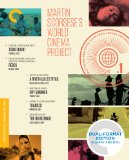| Reviews & Columns |
|
Reviews DVD TV on DVD Blu-ray 4K UHD International DVDs In Theaters Reviews by Studio Video Games Features Collector Series DVDs Easter Egg Database Interviews DVD Talk Radio Feature Articles Columns Anime Talk DVD Savant Horror DVDs The M.O.D. Squad Art House HD Talk Silent DVD
|
DVD Talk Forum |
|
|
| Resources |
|
DVD Price Search Customer Service #'s RCE Info Links |
|
Columns
|
|
|
Martin Scorsese's World Cinema Project
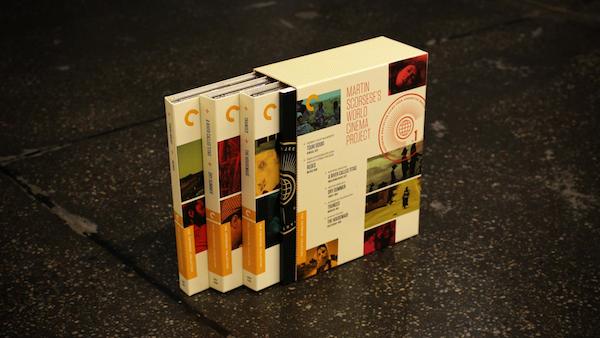
In 2007, Martin Scorsese created the World Cinema Foundation to preserve and distribute films from around the world that had not received proper archival care and/or audience attention since their release. Criterion Collection has just released a box of six of these films, labeled "Martin Scorsese's World Cinema Project No. 1," which hopefully means there are more on the way. While some of these films have had single R1 releases from other labels before, this box set is top-notch and, taken as a whole, this compilation allows the themes of these seemingly disparate films to frequently resonate together in surprising ways.
I will review these films in box set order, which is also the order of their Criterion Collection spine numbers.
Touki Bouki: The Movie

The first full-length film (of two) by Senegal's Djibril Diop Mambéty, Touki Bouki (1973) follows a young couple who are fed up with oppression in Dakar and decide to escape to France. They concoct a number of schemes to steal some money and/or some clothes, so they can look like big shots and sneak onto a boat to Paris.
However, Touki Bouki is the kind of film that defies straightforward synopsis, a concoction that brings to mind Pierrot le fou crossed with El Topo. Tragedy and comedy are generously blended throughout. The outright goofiness of some of the couple's harebrained heists is undercut by a general air of melancholy and doom. Uncensored images of animals getting their throats slit act as ambiguous symbols, seeming to underline the dead-end existence of the youth of Senegal but also later seeming to represent the foolishness of the desire to abandon your home. Ellipses in the storytelling make seemingly ordinary situations surreal and suggest that many of these events might just be a crazy dream.
Touki Bouki is a film that embodies the spirit of youth: the anger, the rebelliousness, the freewheeling insanity, and the dream of achieving something better than what everyone else has been offered. The director Djibril Diop Mambéty manages to capture a moment in time brilliantly, and even more brilliantly, refuses to hamstring his film with on-the-nose commentary about the events he depicts. He lets each bizarre image speak for itself.
Movie: **** 1/2 out of 5.
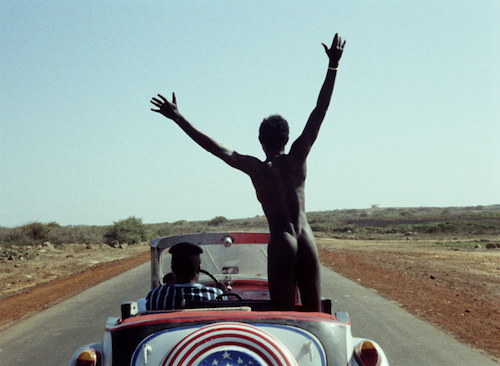
Touki Bouki: The Blu-ray Presentation
The film underwent a 2k restoration in 2008 and the 1.37:1 1080p AVC-encoded image is nearly perfect, apart from a few specks and a few, very brief color abnormalities. Certainly it seems likely that the film has never looked this good before, with vibrant colors and a surprising amount of clarity and detail. The LPCM mono Wolof and French audio track (with optional English subtitles) also seems to have been restored to near-pristine condition. The music, dialogue, and atmosphere all blend perfectly without coming out muffled or too trebly. As with all the films, there is a 2-minute Introduction by Martin Scorsese, presented in HD. Also, there is an engrossing 12-minute HD Appreciation by Abderrahmane Sissako (Bamako), who discusses the impact of the film on himself and his opinion that Djibril Diop Mambéty is the finest African filmmaker ever.
Presentation: **** 1/2 out of 5.
Redes: The Movie
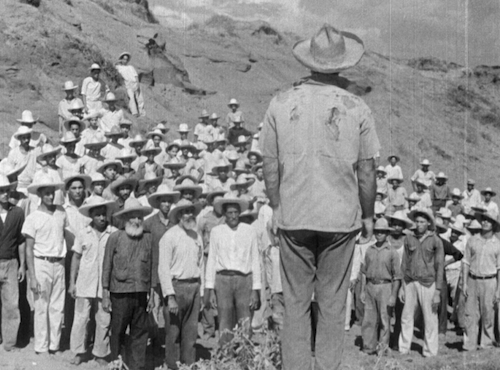
The 1936 Mexican-produced film Redes (Nets; also released as The Wave) is paired on the same Blu-ray disc with Touki Bouki (although each film is featured on its own separate DVD inside the package) and takes a much different approach to dramatizing the plight of oppressed people. Essentially a state-funded propaganda film, Redes portrays poor fishermen who get fed up with their meager wages being chopped up by the greedy big bosses and middle-men. The main character Miro (portrayed, like almost all the characters, by a real fisherman, Silvio Hernández) loses a child because he does not have the money to buy medicine. This radicalizes him to rally the other fishermen to band together and withhold their catches until they get a better wage.
Redes is at its best during its dialogue-free moments. This is partly because the non-actors are often incredibly stiff; even in a foreign tongue, it's easy to tell that as performers... well, I'm sure they're great fishermen. But mostly Redes is great in its speechless moments because of the combined off-camera talents of modernist photographer/cinematographer Paul Strand, director Fred Zinnemann (co-directing with Emilio Gómez Muriel), and composer Silvestre Revueltas. According to historian Kent Jones's accompanying "visual essay" on the film, Strand strove to make every moment a beautiful still-life and Zinnemann strove to make every moment more kinetic. Their warring artistic impulses, juxtaposed with Revueltas's dynamic music, leads to a series of glorious images and energetic sequences. While much of the pleasure of watching Redes comes from appreciating its aesthetic, it is a moving, emotional film that transcends its agitprop intentions and the inexperience of its performers.
Movie: *** 1/2 out of 5.
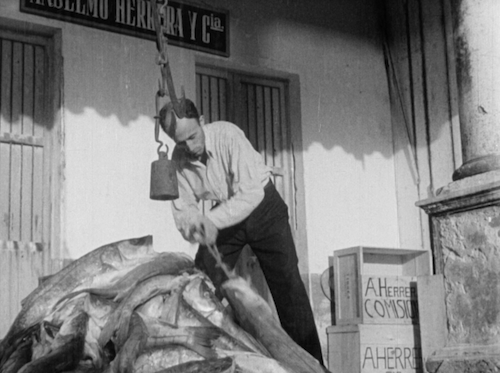
Redes: The Blu-ray Presentation
Being a nearly 80-year-old film whose negative was lost decades ago, Redes -- compiled from a dupe safety negative and a print -- is presented as a 1.33:1 1080p AVC-encoded image but is in pretty bad shape overall. There are constant scratches and wear marks throughout the film. Considering its history, though, this is not a poor transfer. The image remains stable, with no tears and not many noticeable jumps. The World Cinema Foundation has done a great job of getting as much detail into their restoration from the material they were working with. The LPCM mono Spanish audio (with optional English subtitles) similarly shows its age. It's trebly, often hissy, and occasionally garbled. Nonetheless, it's perfectly acceptable and is never disruptive. As for bonuses, there is another 2-minute HD Introduction by Martin Scorsese, plus an 8-minute Visual Essay on Redes, written and produced by historian Kent Jones. Jones runs down the history of the production of Redes, which he reveals was riddled with countless conflicts.
Presentation: *** 1/2 out of 5.
A River Called Titas: The Movie
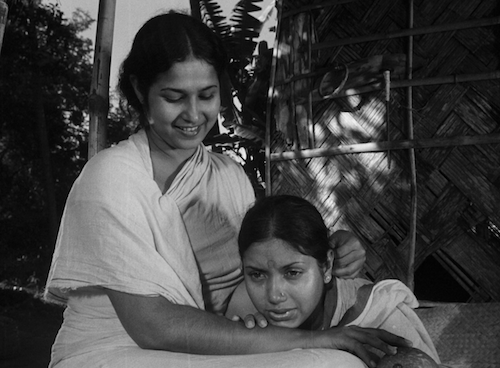
Ritwik Ghatak's 1973 Bengali epic A River Called Titas might be the ultimate Beautiful Bummer movie. It is one of the best-made, most undeniably transcendent films I have ever seen, and it is also one of the most depressing movies I have ever seen. My girlfriend watched the middle chunk of this movie with me but then had to leave the room when a turn of events in the story basically gutted both of us. I stuck with the film and had my heart ripped out two or three more times before the film was done.
Filmed in luminous black-and-white, Titas is an episodic portrait of a village of fisher-folk in Bangladesh. Despite having a milieu similar to Redes, this film plays as its polar opposite. While the working men of Redes band together to fight the oppression of their bosses, the villagers in Titas have to contend with greedy loan managers and a lack of unity and trust within their own community. When a mysterious woman arrives to live in the village, with a 10-year-old son in tow, the villagers immediately divide into opposing camps of those who want to help the woman out and those who distrust her.
Her backstory involves a series of events that almost feels like the opening of a fairy tale. A fisherman from this village visited her village a decade ago and protected her when her people were attacked by raiders. Her parents were so grateful, they immediately married her off to the fisherman. On the journey back to his village, she is kidnapped off the boat in the night. The fisherman goes insane, and the woman is rescued by two other kindly fishermen. Now that her boy is old enough, she decides it is time to find her husband again, hence the arrival in his village. Unfortunately, her journey does not have a storybook ending.
Ghatak is constantly blending gritty realism with poetic lyricism in Titas. This applies to his storytelling, his framing, and his approach to acting. This means that the film never feels untrue, but it often doesn't feel real. Ghatak shines a light on the real-life horrors of the poor and then elevates these events to the level of mythic tragedy. It is truly an astonishing feat, and those with the proper fortitude and a big box of Kleenex are in for an unforgettable experience.
Movie: **** 1/2 out of 5.
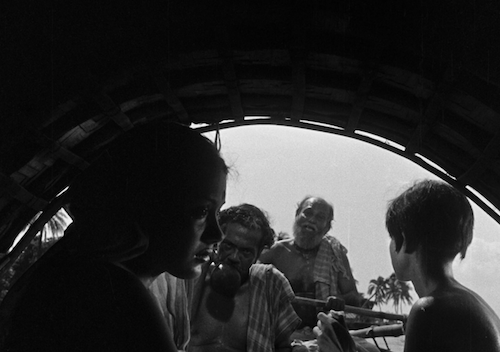
A River Called Titas: The Blu-ray Presentation
This is another film that was restored from the best available elements, which were not always that good. There are occasional scratches, tears, wear lines, and specks. There is less damage present than in Redes and for the most part, the restoration is beautiful. The amount of detail in the AVC-encoded 1080p 1.37:1 image is excellent, which is welcome, since Ghatak often composes "deep" frames and plays many scenes in unbroken wide shots. The LPCM mono Bengali audio (with optional English subtitles) is designed to be very dense with effects, music, and dialogue. Unfortunately, it sometimes gets muffled and is often thin-sounding and trebly. In the bonuses, once again, there is a 2-minute HD Introduction by Martin Scorsese, who (rightfully) seems a little more fervent in his support of this film than normal. There is also a 15 1/2-minute HD Appreciation by Kumar Shahani (Khayal Gatha), a filmmaker who was once a student of Ghatak. His interview is enlightening; he discusses some of Ghatak's biography and how it relates to the themes of separation in the film, amongst other thoughtful topics.
Presentation: **** out of 5.
Dry Summer: The Movie
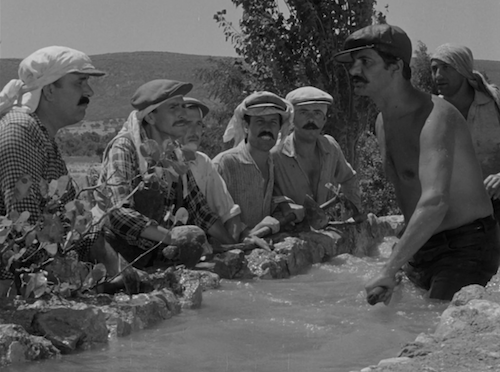
The Turkish film Dry Summer (Susuz Yaz) won the Golden Bear at the 1964 Berlin Film Festival and was a box office hit in Turkey before national censors basically caused the film to disappear for several decades. Featured on the same Blu-ray disc with A River Called Titas (although, again, each movie also appears on its own DVD within the same package), Dry Summer also concerns working people who depend on water for their livelihood. However, cowriter-director Metin Erksan has a more darkly comic, cringe-inducing tale of greed, lust, and betrayal to offer up.
Farmer Osman (Erol Taş) has decided since he has so much land to irrigate that he is just going to dam up the spring that passes through his property rather than share with his neighbors whose farms are downriver. Osman's brother Hasan (Ulvi Doğan, also co-producer of the film) thinks this will only lead to trouble, but he is the younger brother so he has no influence over Osman. Meanwhile, Hasan marries sweet, young Bahar (Hülya Koçyiğit). On their wedding night, Osman creepily bursts through their window, declaring the newlyweds must give him nephews. However, he continues to spy on them -- Norman Bates-style -- whenever they're in bed, suggesting he'd rather just have Bahar to himself.
When the feud between Osman and the other farmers escalates, shots are fired and a villager gets killed. Hasan takes the fall for his brother, which leaves Bahar and Osman living together alone. Director Erksan deftly plays with the audience's dread of what Osman will do next. It's hard to think of a perverted creep, apart from James Mason's Humbert Humbert, who is portrayed so repulsively yet so magnetically. Osman lies to Bahar about not getting letters from Hasan in prison, while continuing to spy on her, hugging pillows in her place, and chatting up a scarecrow he adorns with her headscarf. When Osman tries to seductively drink milk from a cow's udder while Bahar watches horrified, the film hits the apex of queasy, scary, and funny.
Unlike in A River Called Titas, where the characters are left with nearly no hope and the villains often win, Dry Summer offers justice for the characters in the end -- even if the villain has an awfully successful run for an awfully long time.
Movie: **** 1/2 out of 5.
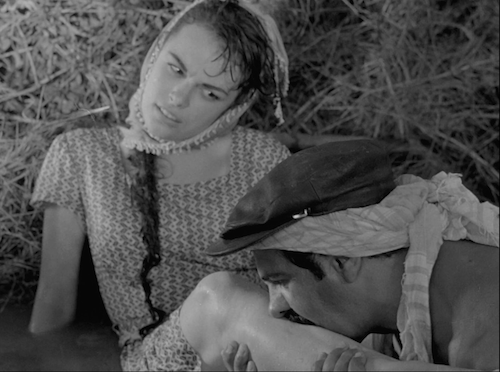
Dry Summer: The Blu-ray Presentation
Beautifully photographed, Dry Summer features the finest black-and-white transfer of this collection. The 1.33:1 1080p AVC-encoded picture looks pristine, apart from a few negligible bits of damage and other specks. The amount of detail and contrast are spot-on. Similarly, the LPCM mono Turkish audio (with optional English subtitles) sounds perfect, absolutely clear and nicely balanced. In the supplements, there is another 2-minute HD Introduction by Martin Scorsese, where he explains how Turkish-German filmmaker Fatih Akin (Head-On) brought the film to the World Cinema Foundation's attention and describes how surprisingly frank the film's sensuality is (he's right, too). Also, there is a great 15-minute HD piece Metin Erksan and Fatih Akin on Dry Summer, where Akin describes first learning about the film when he also won a Golden Bear at the Berlin Film Festival and shares his thoughts and impressions of the film. This is intercut with the film's director, Erksan, talking about the film's production and its post-release censorship woes.
Presentation: ***** out of 5.
Trances: The Movie
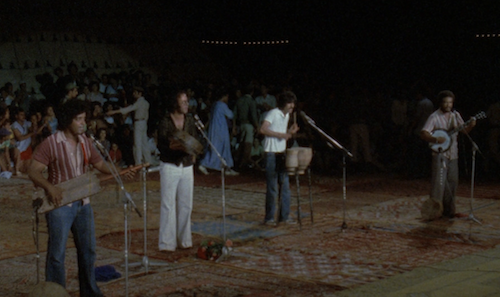
The 1981 documentary Trances (Transes) was the first film selected by Martin Scorsese to be preserved and presented by his World Cinema Foundation. It is easy to see how a musically inclined filmmaker such as Scorsese, who himself directed what is often cited as one of the very best concert films, The Last Waltz, would be drawn to this film focusing on the Moroccan music group Nass El Ghiwane. Shown at first in front of an arena-sized audience, many of whom have rushed to all four sides of the stage to dance near the band, Nass El Ghiwane is remarkable not just for their popularity and the power they exude over their audience, but for the fact that their music is not rock or pop and is instead based on traditional rhythms and created with traditional instruments. More than just the product of retro-folk troubadours, Nass El Ghiwane's music taps into a poetry and spirituality that creates a hypnotic sensation.
Hence: the title of the film. Many of the most indelible moments from this documentary show people moving ecstatically to music, in a trance of some sort. At one of the concert performances presented in the film, a young woman with glasses is shown dancing -- you know, just dancing like a teenager having fun. But, eventually, she gets swept away in the music; she takes off her glasses and begins gyrating her body and moving her arms. Director Ahmed El Maânouni seems so fascinated by this turn of events that he replays it again in slow motion, his camera focused almost entirely on the young woman's face as her commitment to the trance builds and builds. Elsewhere, we are witness to a Gnawa Lila ceremony, where band member Abderrahman Paco sings and plays a lute-like instrument called a guinbri, surrounded by other singers playing hand percussion, creating an atmosphere for worshippers to go into trances, dancing and gyrating. It's a wonderful film sequence, and it reminded me a little bit of the ceremonies that David Byrne documented in his film Ile Aiye.
Trances is a music-driven film, and a little hard to pin down structurally. The main chunk of it is a series of concert performances, from which El Maânouni goes off into candid moments with the band rehearsing, chatting, joking, arguing about how to deal with bootleggers, etc. -- standard behind-the-music moments. But El Maânouni also incorporates images of average people in their neighborhoods, stock footage of Morocco from decades before, theatrical performances captured in the '60s -- a number of eclectic sources meant to flesh out the roots of Nass El Ghiwane without resorting to having a narrator just flat-out say, "Nass El Ghiwane is influenced by [this and this and this and this]." It's an intuitive, pleasurable approach to capturing the world of Nass El Ghiwane, but for an outsider looking at this thirty years later, sometimes it feels like there are factual gaps, that might have seemed too obvious to elaborate upon at the time, that would be nice to have filled in.
Nonetheless, Trances is a very joyful film, certainly the most upbeat selection in the box set, and a great discovery for music fans unfamiliar with this excellent music.
Movie: **** out of 5.
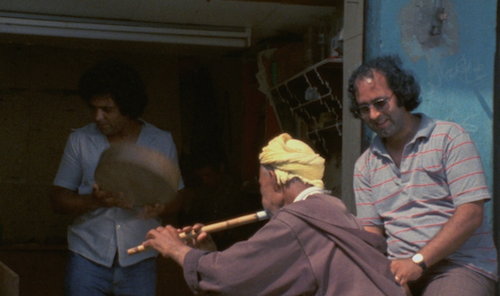
Trances: The Blu-ray Presentation
Shot on 16mm, Trances looks good for a 30-year-old documentary. The AVC-encoded 1080p 1.60:1 image has relatively little damage and has good color reproduction. It is grainy and occasionally soft, but only because of the shooting format and style; the transfer is exactly what you would hope for. And, for a music driven film, the LPCM mono Arabic audio (with optional English subtitles) has great clarity and balance. When the band is performing, the string instruments, percussion, and voices all seem nicely separated. In the bonuses, we get another 2-minute HD Introduction by Martin Scorsese, where he discusses selecting Trances as the premiere film for the World Cinema Foundation and his personal history with the film. This gets further fleshed-out in the 18-minute HD Interview Program with director Ahmed El Maânouni, producer Izza Génini, band member Omar Sayed, and Martin Scorsese. Scorsese talks about first seeing the film on late night cable in New York and eventually incorporating Nass El Ghiwane's music into The Last Temptation of Christ; the filmmakers discuss how what was supposed to just be a concert documentary turned into a film with a more holistic view; and Sayed shares his original misgivings with doing the movie that gradually gave way to his admiration of the finished product.
Presentation: **** 1/2 out of 5.
The Housemaid: The Movie
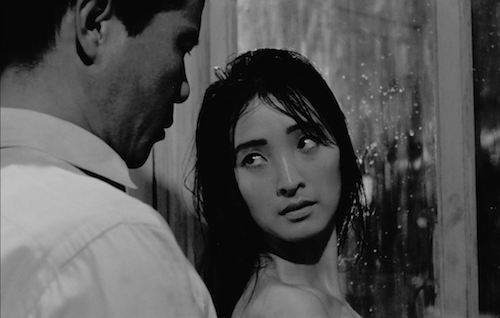
The thematic odd-man-out (and, in my opinion, the runt of the litter), Kim Ki-Young's psychosexual thriller from 1960, The Housemaid is tacked onto the final Blu-ray with Trances (although, as with all the movies, it also comes on its own dedicated DVD included in the packaging). Not a complete misfire, but aggressively unpleasant, The Housemaid prefigures movies like Fatal Attraction with its tale of a middle class South Korean man whose bourgeois existence is thrown into peril by a sexually ravenous and (of course) psychotic woman.
Teaching music to a factory full of women, our man (Kim Jin-kyu) becomes the subject of numerous crushes. Unfortunately, one of them is from his blackmail-happy new housemaid (Lee Eun-Shim). When circumstance leads our, ahem, "hero" to impregnate the young woman, his also-pregnant wife (Ju Jeung-Ryu) is worried about gossip getting out and jeopardizing her husband's job. She takes drastic measures to keep the housemaid from having the baby, which backfires on everybody. The housemaid then uses the secret of everyone's bad behavior to essentially hold the family hostage. Terror, mayhem, and a handful of murders ensue.
Echoing the work of other button-pushing directors like Hitchcock and Bunuel, Kim knows exactly what he is doing. In fact, as he moves past predictable plot turns and ratchets up the insanity of his characters' actions, the film becomes slightly more palatable; instead of waiting for the inevitable cruel shoe to drop, we are caught consistently off-guard by each bizarre new development. It would not be surprising if Park Chan-Wook (Oldboy) carefully studied the storytelling approach of The Housemaid in his younger days.
While The Housemaid is not completely devoid of commonalities with the other films in the box set -- the frank sexuality is a little bit reminiscent of Dry Summer and the mounting pile of misfortunes for our hero has some resemblance to the fate of the people in A River Called Titas -- the simple fact that we are focusing on middle-class problems in the film makes it seem glaringly out of place. The fact that it is a horror-satire makes it stand out even more, amongst the more earnest offerings that preceded it.
Still, there is a part of me that suspects that there might be a time when I will re-watch The Housemaid on its own and think better of it. But on the heels of watching three film masterpieces and two lesser but still overall great works, this flawed but fascinating movie completely pales in comparison.
Movie: *** out of 5.
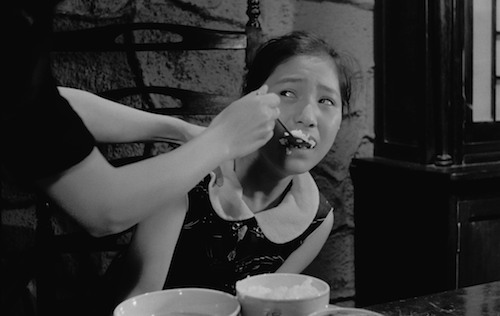
The Housemaid: The Blu-ray presentation
The Housemaid's presentation is sadly a mixed bag. The AVC-encoded 1080p 1.60:1 picture is the result of a digital transfer by the Korean Film Archive. Most of the film is taken from a negative that looks pretty nice, but it seems like it's been treated sporadically with some unsightly DNR. Plus, reels 5 and 8 of the negative were missing, and the only thing they could find to fill in those gaps was a beaten-up print with huge English subtitles. I'm sure that numerous technicians did a lot of work on these sections, but it still looks like a bad print that vacillates between looking washed-out and looking ultra-contrast-y. To add insult to injury, the digital subtitle removal is so unsubtle and unsightly that it would almost be better to have black bars over those sections of the frame. Thankfully, the LPCM mono Korean audio (with optional English subtitles) sounds perfectly fine throughout. In the bonus department, we have our final 2-minute HD Introduction by Martin Scorsese, who admits his relative inexperience with Korean cinema and shares a few tidbits about director Kim Ki-Young and this film. The 15-minute HD Appreciation by Bong Joon-Ho (Memories of Murder, The Host) is extremely entertaining. Plus, his conviction that The Housemaid is a masterpiece made me give it more consideration than I had given it immediately after it ended. Still, I don't think it's a masterpiece.
Presentation: *** out of 5.
Final Thoughts:
As I mentioned in the last section, I think this box contains three masterpieces (Touki Bouki, A River Called Titas, and Dry Summer), two great films (Redes, Trances), and a flawed but fascinating movie (The Housemaid). Criterion has packaged the films in the box on 3 Blu-rays and 6 DVDs, with the same bonus features in both formats. It also comes with an attractive 64-page booklet with photos, critical essays, and credits. It's a well-curated collection that begs for more like it. If, like me, you have never been exposed to any of these six movies before, then you're in for quite a trip. Highly Recommended.

Justin Remer is a frequent wearer of beards. His new album of experimental ambient music, Joyce, is available on Bandcamp, Spotify, Apple, and wherever else fine music is enjoyed. He directed a folk-rock documentary called Making Lovers & Dollars, which is now streaming. He also can found be found online reading short stories and rambling about pop music.
|
| Popular Reviews |
| Sponsored Links |
|
|
| Sponsored Links |
|
|
| Release List | Reviews | Shop | Newsletter | Forum | DVD Giveaways | Blu-Ray | Advertise |
|
Copyright 2024 DVDTalk.com All Rights Reserved. Legal Info, Privacy Policy, Terms of Use,
Manage Preferences,
Your Privacy Choices | |||||||









